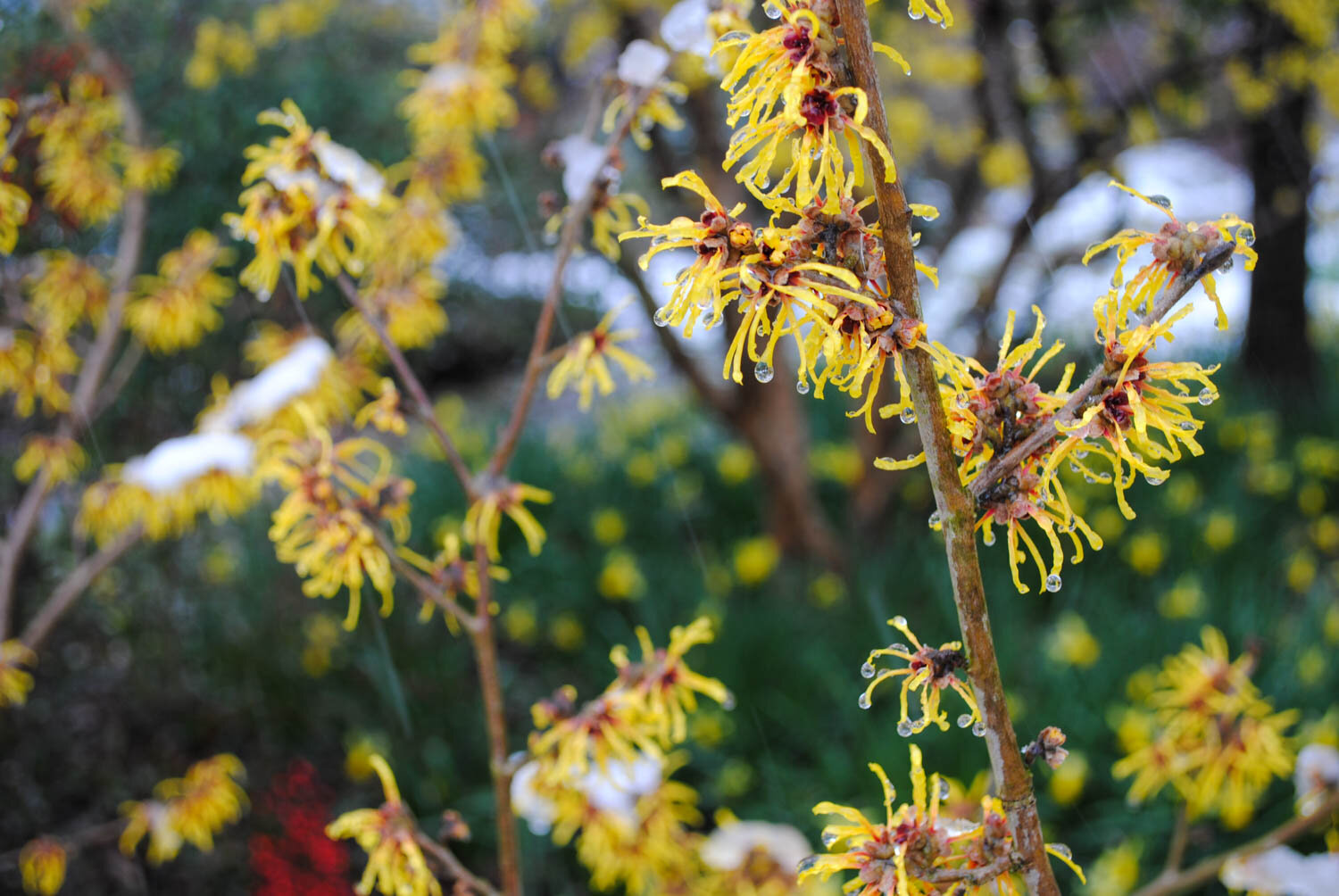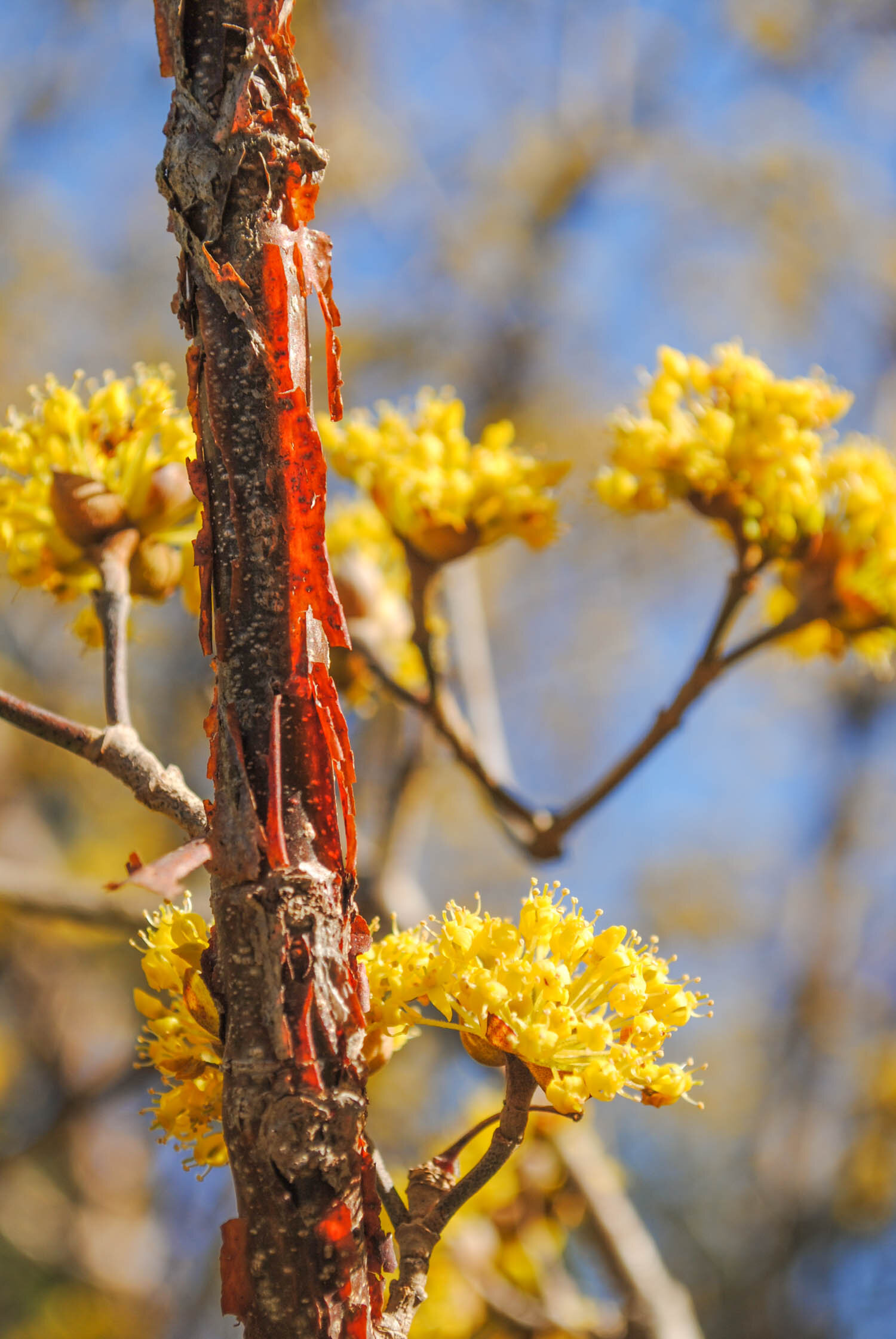This post is 2 of 12 of a series I’m doing this year reflecting back on some of my favorite plants from visiting the JC Raulston Arboretum while attending graduate school at NC State in Raleigh NC. Check back next month for more.
February was one of my favorite times to visit the JC Raulston Arboretum. With the hold of winter receding, walking around the garden was a scavenger hunt in discovering what flowers were in bloom. Even the smallest of flowers were appreciated as the gardening season began to awaken. After visiting for a few years, I became more aware of the flowering schedules and knew better what to expect. Sometimes plants would bloom early, sometimes they would flower late, but February seemed to always be a reliable time to start seeing color increasing in the garden.
For this month’s reflections from the JC Raulston Arboretum, I wanted to share some of my favorites for late winter color. Reviewing these photographs reminds me of how many of these plants I actually need to try in Texas!
I enjoyed studying the Prunus mume collection in the garden. Even going back to J.C.’s first newsletter, he spoke highly of them. This cultivar is ‘Bridal Veil’, a really nice weeping form.
A close up of ‘Bridal Veil’ flowers
Close to the stairs of the Ruby McSwain Visitor Center was ‘Omoi-no-mama’, a nice white-to-blush, semi-double flowering form of Prunus mume. I really liked the placement and how walking up the stairs allowed me to get my face in the flowers.
The arboretum had a few specimens of the winter flowering Cornus officinalis and Cornus mas. In the winter garden was ‘Kintoki’, one of my favorite forms of Cornus officinalis selected by Barry Yinger for its beautiful exfoliating bark.
Near ‘Kintoki’ in the winter garden was Chaenomeles speciosa ‘Contorta’. It was a scraggly thing with its contorted flowers, but getting up close with the blooms I made an amazing discovery.
Even the stamens were contorted! How cool! Whatever genes were making the branches bend also curled the flower stamens. I noticed that the sun was about to shine on the blossoms, so I hung around and got a good progress photograph of sunlight hitting the flower. I use these images in my classes to illustrate how light can change the appearance of flowers.
Here is a minute later when the sun barely began to shine on the flowers producing a nice glow. This diffused light shot is my favorite of the three.
And, here another minute later the light is a bit harsher.
Another genera that I fell in love with at the JC Raulston Arboretum was Stachyurus. Here we see ‘Sterling Silver’ wearing its strings of pearls. I can’t believe I haven’t tried these yet in Texas!
Perennials would also start popping around this time of year. I always enjoyed seeing this large planting of the aptly named Narcissus ‘February Gold.’
Most people are familiar with the yellow form of Narcissus pseudonarcissus, but I always thought that these cream Narcissus pseudonarcissus subsp. moschatus looked charming in the perennial border.
I would lay on the ground to photograph Ipheion that barely rose six inches of out the soil. It is like someone stenciled black lines on the undersides of the petals of this ‘Wisley Blue’.
Now I appreciate Ipheion even more as they are one of the few early geophytes that we have flowering in east Texas this time of year. Some like ‘Froyle Mill’ have a really nice purple color.
Iris unguicularis was another reliable winter flowering perennial. It is unfortunate that the flowers are so hidden.
So, you have to get into the clump of Iris unguicularis to really appreciate the flower intricacies.
Another iris in bloom was Iris tuberosa (or Hermodactylus tuberosus), a really novel perennial. Finding a plant with green and black flowers in February is so funky.
Here’s a close up of the flowers on Iris tuberosa. The black falls seem like velvet.
I also enjoyed seeing the spiraling Euphorbia rigida on the roof garden of the Ruby McSwain Visitor Center. The leaves and flowers had such psychedelic colors for late winter.
Walking around one afternoon, I noticed that this plant had flowers in the middle of the leaves! Turns out these “leaves” are actually flattened stems or cladodes on Ruscus × microglossus.
A close up of the quirky Ruscus × microglossus. Students really find these plants fascinating because of the position of the flowers.




















